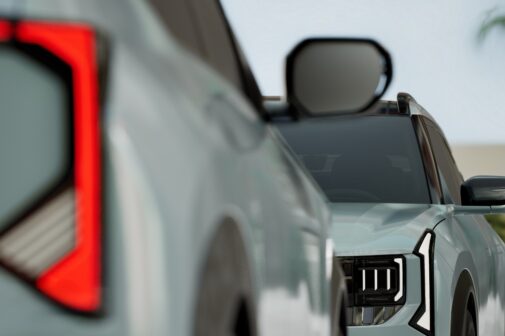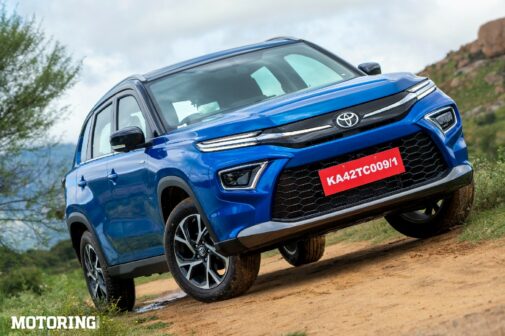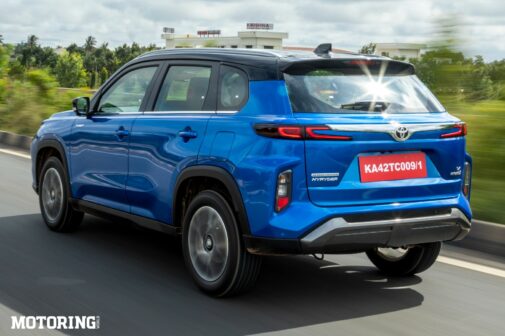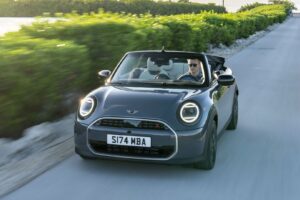Why Toyota chose Urban Cruiser Hyryder is a question many will ask. It’s a bit of a mouthful, right? The answer is manyfold. There are many brilliant aspects of something from Toyota’s portfolio thrown into this one, which makes sense as the midsize-SUV space is cutthroat. There are so many options in that space — there are six, seven when the reborn Maruti Suzuki Grand Vitara arrives about a month from now — that the Japanese brand has to stand out. By bringing its hybrid technology to mass market segments, Toyota hopes to achieve that.
What the company has also managed to achieve rather well is that one look at the Urban Cruiser Hyryder will tell you it belongs to Toyota’s stable. It has musculature, but it’s well-melded to the flowing lines and slimming details, such as the LED DRLs, the all-LED tail lights, and the grille. Speaking of the grille, that carbon fibre-like finish is gorgeous. The strong yet curvy theme continues along the side, and the 17-inch dual-tone alloy wheels also add a touch of sportiness.

I quite liked this colour of blue that our Hyryder Hybrid was finished in, and the contrast black roof accentuates the downward flowing lines towards the rear. The Urban Cruiser Hyryder and Hybrid badges are prominently displayed, but the bit of chrome used for the variant badge is even larger, which is contrary to current trends, with some carmakers forgoing one altogether. That the black plastic cladding is limited to the bottom few inches while retaining the squat and solid stance, is superb, and definitely shows off that Toyota SUV lineage while earning that Cruiser bit of its nameplate.
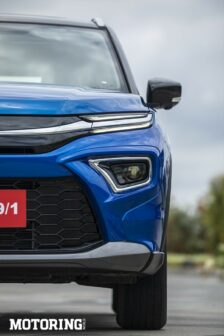
Stepping into the Hyryder isn’t a chore, and you’re sat up high enough, even with the driver’s seat pushed down to its lowest setting. It’s a nice enough cabin, and the brown leatherette on the dash, doors, and centre console, along with the silver accents, make the area feel plush. The well-contoured seats — the front ones get a powerful but noisy ventilation function while the rear ones recline — add to that feeling of comfort, and the large panoramic sunroof helps the spacious cabin feel airier. A thicker weave for the sunroof blind might have been a better choice as the sun does filter through when it’s at its zenith.
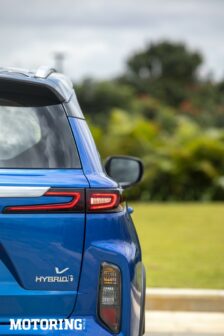
A closer look and things seem familiar, in a not-so-nice way. The 9-inch infotainment system, HUD, and buttons for a variety of functions are from Maruti’s parts bin, but they are of good enough quality and feel durable. I always find HUDs to be quite useful, and this unit is informative, too. It’s commendable that despite the sun coming in, everything is quite legible, and everything works well enough, from the Apple CarPlay and Android Auto compatibility to the cruise control, but the voice assistant is always listening in and responds at unlikely times. I have always felt that unused buttons are a bit of an eyesore, and those below the HVAC controls looked out of place.
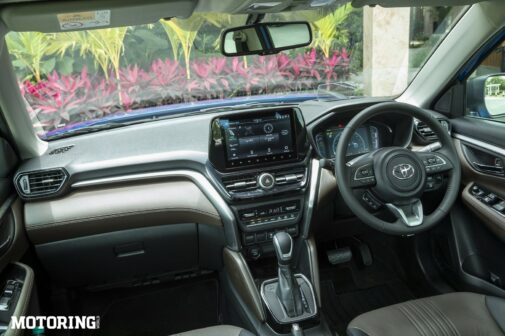
Toyota is keeping up with the times in terms of connectivity and safety features. You get cocooned in six airbags in case the worst happens, there are all the usual electronics (traction control, ABS, etc.) kicking in during emergency situations, and you can even remote start the engine and the automatic climate control system from your smartphone. These aspects are common fare in the midsize-SUV segment, and it’s proper that the Japanese carmaker doesn’t fall behind. Where Toyota edges ahead, is the technology in the powertrain department.
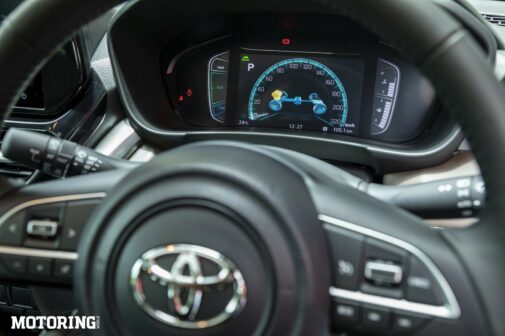
There are two engine options, both with a degree of electrification. The 102-bhp 1.5-litre petrol option gets a mild-hybrid assist (in the form of an integrated starter generator) and is called the Neo Drive. The one we drove — called simply, Hybrid — gets a petrol-electric power plant that produces a maximum of 114 bhp. The output numbers aren’t class-leading by any margin, but what is, is the fuel efficiency figure. Even disregarding the stupendous 27.97 kpl ARAI figure, the mileage numbers are impressive. After some spirited driving in the Sport mode (Normal and Eco don’t feel all that different), we managed 14.7 kpl, which is definitely diesel SUV or small hatchback territory.
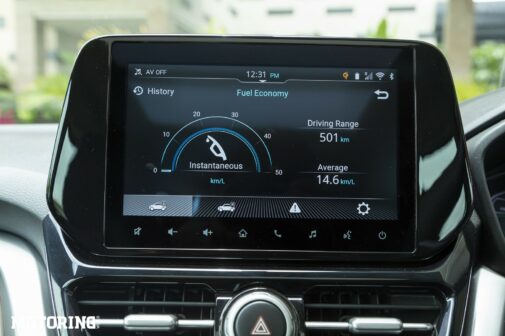
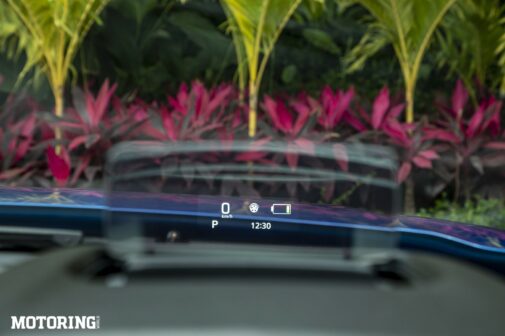
It was also quite assuring that the distance to empty showed over 500 km, even after I had driven the Hyryder for over 100 km by the time we were done. Going back to the bit about spirited driving, this isn’t a powertrain that works best when pushed hard. In fact, you (and those around you) will know when that rorty, 91-bhp Atkinson cycle petrol engine kicks in to assist the 79-bhp electric motor — refinement is an area that Toyota usually gets spot on, so this is slightly disappointing. Even in EV mode, the whine from the electric motor and the sound of the suspension working can be heard.
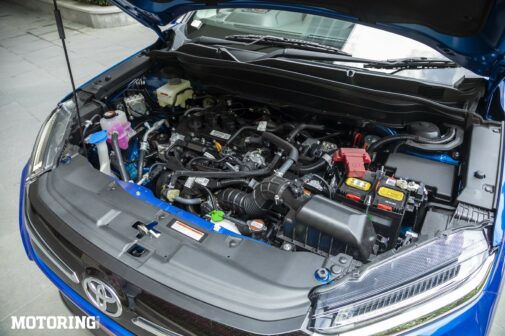
However, keep a light right foot and you’re rewarded with a smooth and extremely frugal drive. The auto gearbox shifts seamlessly, and the electric motor is great for driving sedately. The brakes take a little getting used to if you’re coming from a standard petrol car to the Hyryder, especially in the cold. The regenerative nature can be felt in the numbness of the pedal and can be heard from the very mild electronic squeal from the brakes themselves. Still coming to a halt quickly, and without drama, is accomplished easily.
What is also completely fuss-free is the ride quality. Typical of Toyota SUVs (another linkage to its nomenclature), the Urban Cruiser Hyryder tackles bad roads with grace, and nary a speed bump or abrasion filters into the cabin. Still, the suspension isn’t as soft as its Korean contemporaries, which means there isn’t as much body roll, or pitch and yaw, when you hustle Maruti’s midsize SUV through some bends. Nonetheless, the Hyryder isn’t tuned to take on twisties fast and is best driven at seven-tenths of its full capacity to ensure you get the best out of it.
All in all, betting that Toyota’s sales are going to see a serious uptick is not a big gamble. The brand has even revealed that most bookings received have been for the Hybrid version. And that makes sense because if you want a convenient conveyance that is comfy enough for four, and can deliver diesel-like mileage with near-petrol maintenance costs and driveability, the Hyrder Hybrid is your best bet. We’ll have to wait and see if the AWD version lives up to the company’s lineage, but with the Hybrid, Toyota’s definitely looking to eat into the diesel-powered midsize-SUV segment, and the Urban Cruiser Hyrder makes quite a statement in that regard, besides the one it makes with its name.
AUTODATA
Toyota Urban Cruiser Hyryder Hybrid VPOWERTRAIN
Displacement:
Max Power:
Max Torque:
Transmission:
1490cc, I3, petrol-electric
114 bhp
12.34 kgm
e-CVT
TYRES
F/R: 215/60 R17
DIMENSIONS
L/W/H (mm):
Wheelbase:
Ground Clearance:
Kerb Weight:
Fuel Capacity:
4365/1795/1645
2600 mm
NA
1295 kg
45 litres
PRICE
Rs 18 lakh (estimated, ex-showroom)









